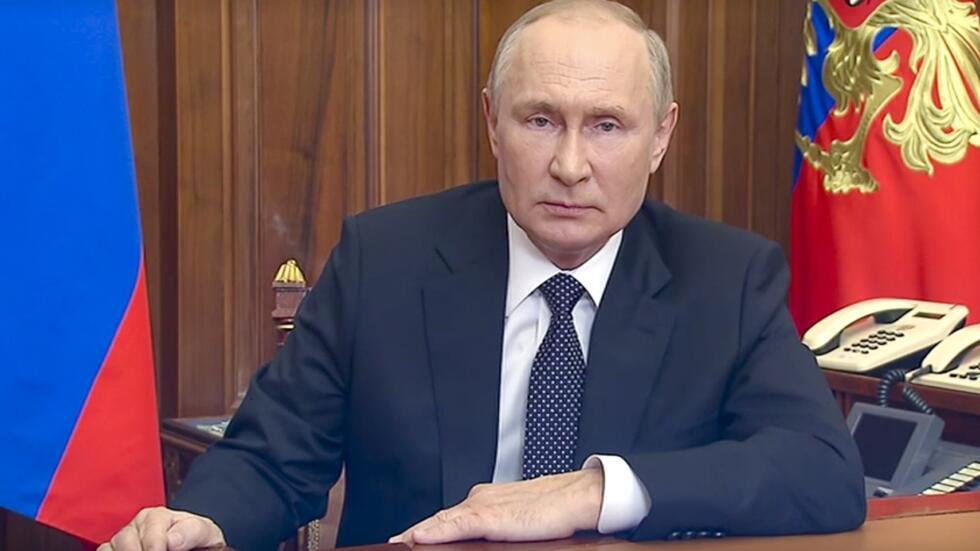
During negotiations made in Istanbul, Turkey, the Russian delegation presented a document to Ukraine with the conditions it is necessary to sign a peace agreement.
The proposal, described in a memorandum obtained by the broadcaster RT, establishes territorial, military and political requirements as a prerequisite for the end of the conflict.
The text is structured in three main sections: criteria for a “final agreement” between the two countries, measures aimed at establishing a ceasefire and a “route sheet” with unilateral steps to be adopted by Moscow.
In the territorial field, Russia requests that Ukraine officially recognizes Russian sovereignty about five regions currently in dispute: Donetsk, Lugansk, Kherson, Zaporozhye and Crimea. These territories were attached after referendum organized by Russia in 2014 and 2022. The elections are considered illegitimate by Kiev and most member countries of the United Nations (UN).
The proposal also requires the total removal of the Ukrainian Armed Forces, as well as any militias, of these territories.
Another central point is the requirement of Ukraine’s neutrality in the international scenario, which would imply the formal renunciation of entry into the organization of the North Atlantic Treaty (NATO). In addition, the country should review treaties and agreements that contradict such a condition of neutrality.
Regarding weapons, the document requires Ukraine guarantees that it will not maintain, will acquire, allow traffic or install nuclear weaponry in its territory. The country would also need to make a permanent commitment to denuclearization.
The proposal presented by Moscow also determines restrictions on the size of the Ukrainian Armed Forces, without specifying quantities. Additionally, it requests the dismantling of nationalist armed groups currently integrated with the Armed Forces and the National Guard of Ukraine.
In the social and cultural field, the memorandum includes demands for protection to the Russian origin population in Ukraine. Among the points cited are the officialization of the Russian language, the termination of actions against the Ukrainian Orthodox Church linked to Moscow and the prohibition of Nazi propaganda and nationalist orientation groups.
Another item of the proposal requires that both Russia and Ukraine renounce any future request for economic reparations arising from the war, including financial or institutional damage assessments.
For the implementation of a ceasefire, the document offers two alternatives. The first provides for the removal of the Ukrainian troops from the regions currently under Russian control, with a retreat to a distance yet to be defined from the border. This operation would have to be completed within 30 days.
The second alternative, entitled “Package Pact”, would involve the suspension of military mobilization in Ukraine, the end of arms and information by western countries and the creation of a bilateral center of monitoring of ceasefire. It would also include the exchange of prisoners between the parties.
The document states that Ukraine should suspend the state of war and call presidential and parliamentary elections. The measures listed for this step would also have to be executed within 30 days.
The formalization of a definitive peace treaty, according to the Russian proposal, would depend on the realization of these elections in Ukraine. After this process, the agreement should be ratified by a binding resolution of the UN Security Council.
In the week prior to the dissemination of the content of the Russian proposal, the Reuters agency revealed the main points of Ukraine’s counterproposal. Kiev rejects recognition of the attachment of the regions occupied by Russia and maintains as a strategic objective to adherence to NATO. In addition, it requires the payment of war reparations by the Russian government.
Negotiations between the two countries follow without agreement. The presentation of the proposals occurs in a context of military and diplomatic impasse, with growing indirect involvement of international powers and maintenance of confrontations on different fronts of battle.
The content of the Russian document, although not officially disclosed by the Moscow authorities, confirms Kremlin’s strategy to condition any advance in the peace process to recognize the territorial changes unilaterally since 2014. In turn, the Ukrainian position is still aligned with UN resolutions that recognize Ukraine’s territorial integrity and do not admit the attachment of regions by military force.
The continuity of negotiations and the possibility of international mediation remain open, while the divergences of the terms considered acceptable by both parties persist.
Source: https://www.ocafezinho.com/2025/06/03/saiba-quais-sao-as-ultimas-propostas-da-russia-para-acabar-de-vez-com-a-guerra-na-ucrania/

